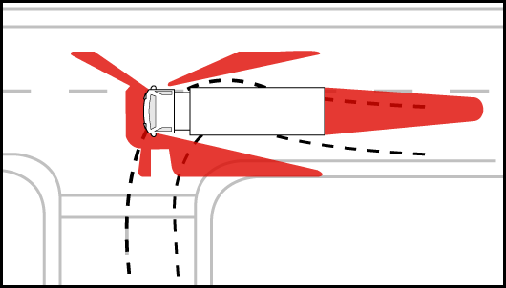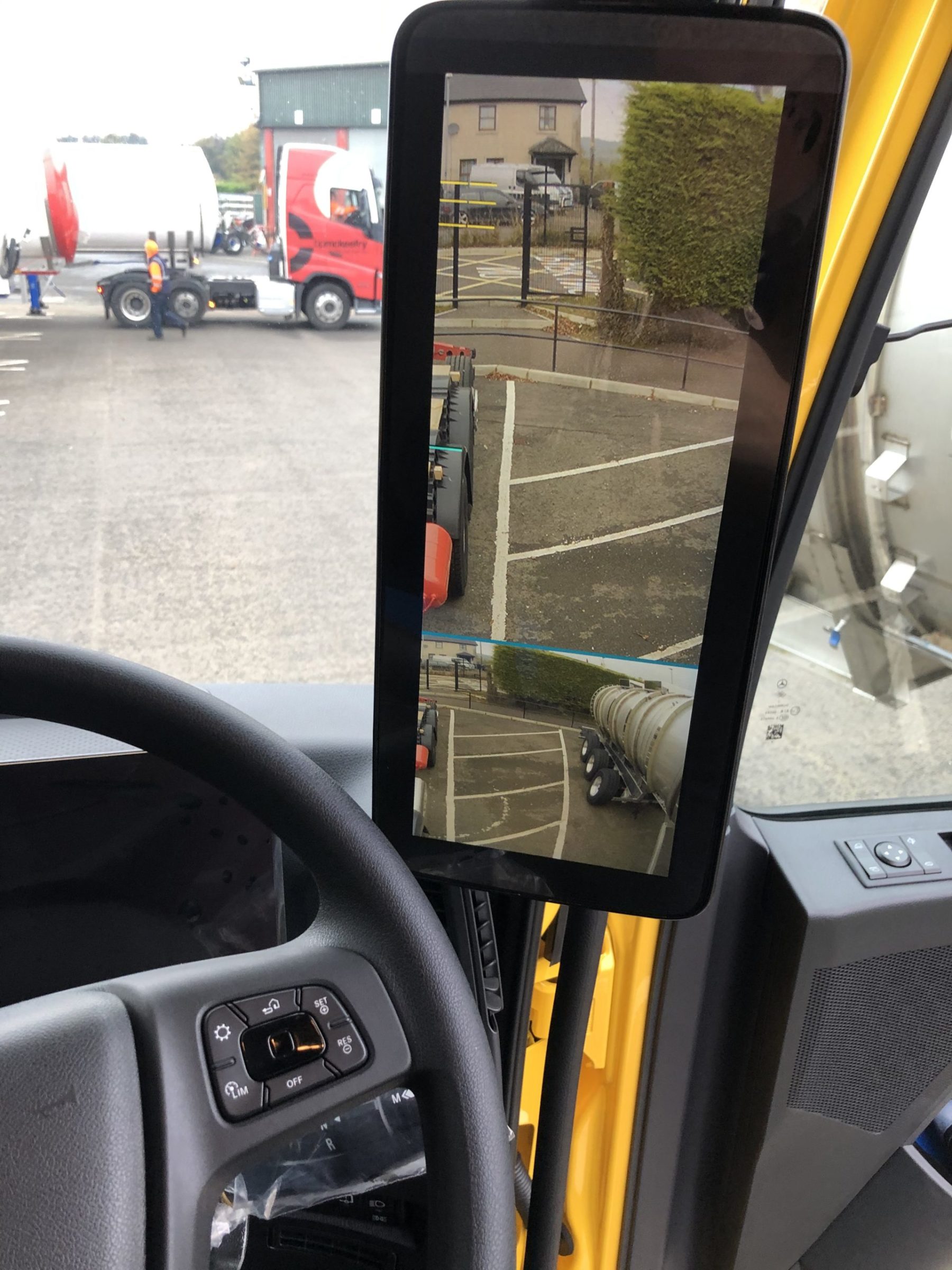With new technologies and health and safety regulations for modern lorries such as; mirrorless cabs and better braking/safety systems, driving a heavy goods vehicle (HGV) has become a lot safer. However, manoeuvring these vehicles is still difficult because of their sheer size and weight.
With the frequent news of collisions involving lorries, cars, cyclists and pedestrians, we believe it is always better to be aware of how to safely manoeuvre or drive in conjunction with HGV’s.
As this is information drivers, cyclists and pedestrians may not be fully aware of, we have put together a few tips on how to minimise the risk of collisions.
Some general advice when driving near to heavy goods vehicles is to ensure that you can see the driver, this generally means that they can also see you.
1. Know HGV blind spots and steer clear
Like cars, HGV’s have blind spots, however the size and quantity of lorry blind spots are very different from a regular car.
The image below depicts an HGV’s blind spots. Car drivers should ensure they do not sit in these areas as they could be invisible to the driver. Cyclists and pedestrians should also beware of these spots.

2. Pass a lorry with care
When passing a lorry, drivers should be aware that they could be moving directly into a blind spot. Be cautious when overtaking, but do not hesitate.
If in front of a lorry on the motorway, wait until the entire cab can be seen in the rear-view mirror before pulling into the lane. This will make sure the lorry driver can see you and that there is an adequate braking distance between the HGV and car.
Drivers should also never undertake a lorry and cyclists need to be beware of being in close proximity to HGV’s in towns and cities – especially at junctions where the HGV may be turning.
3. Indicate in advance
When pulling out to overtake a large vehicle, move steadily and ensure you signal in plenty of time so they are aware of your presence.
Due to their size and weight, lorries take longer to slow down and stop. Make sure you give a lorry driver enough time to react by indicating at least 3 seconds before moving.
4. Give the lorry space

Allow large vehicles plenty of space, particularly from behind. An HGV cannot see a car that is directly behind them so it is best to leave enough distance to allow time to stop.
Heavy vehicles need more room to make turns, always leave space for a lorry turning or at roundabouts.
5. Be Patient and be prepared
HGV’s take time to speed up and slow down and therefore take longer at junctions to complete the same manoeuvre of a car driver.
New Investments:
CountyClean Group took delivery of a new Mercedes-Benz HGV “mirrorless” cab in December 2019. The new feature uses CCTV cameras instead of conventional mirrors which gives drivers a wider field of vision helping to minimise blind spots.
We are updating all new vehicles in our fleet with the mirrorless cab as part of our rolling replacement investment plan.
We hope that this information has been of assistance to drivers, cyclists and pedestrians by highlighting a heavy goods vehicle’s blind spots and has aided in raising awareness of the hazards HGV drivers face daily.
